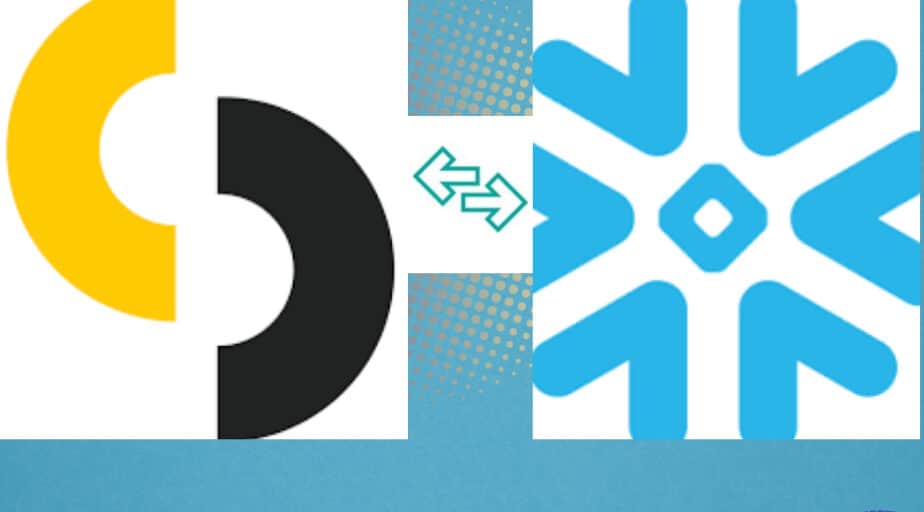Snowflake to Sisense: A Step-by-Step Data Migration Guide
- Ndz Anthony
- July 3, 2023

You’re standing in a room filled with data — mountains of raw information, awaiting analysis and eager to reveal their hidden insights. On one end, you’ve got Snowflake, a cloud-based data storage and analytics powerhouse that’s holding your valuable data.
On the other end, you have Sisense, a brilliant business intelligence tool, ready to transform that raw data into digestible, actionable insights.
But there’s a catch — your data needs to travel from Snowflake to Sisense, and it’s not a journey it can make alone. You need a guide, a conductor, someone (or rather, something) that can facilitate this data odyssey efficiently and accurately.
Datameer is a renowned data integration platform known for its impeccable ability to streamline the data journey from a multitude of sources to a wide range of destinations, including our stars today, Snowflake and Sisense.
But in this guide, we’re adding another player to the mix: Google Sheets. We’re going to use the Google Sheets integration in Datameer to send data from Snowflake to Google Sheets, and then from Google Sheets to Sisense.
This might seem like a roundabout way of doing things, but it has its advantages. Google Sheets is a widely used and familiar platform, and using it as an intermediary can make the data migration process more manageable and transparent. Plus, it allows you to leverage the Google Sheets integration already available in Datameer and Sisense.
So, if you’ve ever wondered how to facilitate this data transfer, or why you should be doing it in the first place, stick around. You’re in for quite a journey.
The Heart of Data Science: Migration and Integration
So, why does this data journey even matter? Let’s put it this way: in the world of data science, the power isn’t just in the data itself. It’s in how you use it.
And to use it, you often need to move it. You see, data sitting alone in a silo is like a book that’s never opened — filled with potential insights but, alas, unread and unappreciated.
When it comes to advanced business intelligence (BI) and analytics, it’s often about bringing together data from diverse sources. By transferring your data from Snowflake, a top-notch storage platform, to Sisense, a powerful BI and analytics tool, you’re not just moving data — you’re setting the stage for advanced analysis and insight generation.
In essence, it’s about getting the right data to the right place at the right time. And that’s where data migration — and specifically, Datameer’s capabilities — come into play.
Why Snowflake + Sisense Makes Sense
Imagine trying to put together a puzzle where each piece comes from a different box. Sounds challenging, right? In the data world, each platform is a puzzle box full of unique pieces — data that’s formatted, stored, and accessed in ways that are unique to each platform. The challenge is to bring these puzzle pieces together to create a cohesive, meaningful picture.
Snowflake excels in data warehousing and analytical processing, providing a secure and scalable solution for storing vast amounts of data. It’s a super-flexible, cloud-built data platform designed for simplicity and efficiency.
On the other end, we have Sisense, a comprehensive BI platform that allows you to dive deep into data, offering dynamic, interactive dashboards, and the power to pull out insights that can revolutionize the way you do business.
Both platforms have their unique strengths, but they shine brightest when they work together.
Moving data from Snowflake to Sisense can allow for deep, robust analytics that can drive better decision-making and spur innovation. And facilitating this movement with precision and ease is where Datameer comes in.
The Data Journey from Snowflake to Sisense
And now, the moment we’ve all been waiting for! Grab your data, strap in, and prepare for a journey through the clouds. We’re about to embark on an odyssey from the snowy heights of Snowflake down to the insightful plains of Sisense. With Datameer and Google Sheets as our trusty guides, let’s get started.
Set up your Connection in Datameer:
1. Log into your Datameer account. Find the Snowflake icon and click on it. Enter the details of your Snowflake account, including your account name, username, password, and database name.
Import Your Snowflake Data:
2. Once your connection is established, go to the home page and click ‘New Project’.
3. After successfully creating a new project. You’ll see a list of your Snowflake databases containing tables/data on the left hand side of your workbench. Select the tables you want to import to Sisense.
Transform and Refine Your Data:
4. After selecting your data, you can use Datameer’s robust data transformation tools to cleanse, refine, and prep your data for Sisense.
5. Whether it’s merging datasets, creating new calculated fields, or filtering data, Datameer’s intuitive interface makes it easy.
Connect to Google Sheets:
6. With your data refined and ready, it’s time to set up your Google Sheets connection. Just as you did with Snowflake click the settings icon to go to Integrations, but this time select ‘Google Sheets’.
7. Import your Google Sheets account details(JSON file), which has your account key and email associated with your Google service account.
8. Create an empty google sheet within the associated google account service and copy the URL to this sheet. But make sure access permissions are set to “Editor”.
Export Data to Google Sheets:
9. Go back to your workbook where your transformed data resides, and simply choose ‘Export’. Select “Google Sheets”.
10. In the URL field, paste the URL to the empty Google Sheet where you want to send your transformed data and fill the other fields respectively, then click apply.
11. Click “Sync now”. Your data should be in the sheet in no time.
Import Data to Sisense from Google Sheets:
12. Now, log into your Sisense account. Navigate to the ‘Data’ tab and click ‘+ New Data Source’.
13. From the list of connectors, select ‘Google Sheets’.
14. You’ll be prompted to sign in to your Google account. Enter your Google credentials and allow Sisense to access your Google Sheets data.
15. After you’ve authenticated, you’ll see a list of your Google Sheets. Select the sheet you just exported data to from Datameer.
16. You can choose to import the entire sheet or specific ranges. You can also choose how to handle updates to the Google Sheet (e.g., whether to refresh the data in Sisense when the sheet is updated).
17. Click ‘Done’ to import the data. The data from your Google Sheet will now be available as a table in Sisense.
Visit this 👉 Sisense- google sheet integration guide if you need more help.
Create a Dashboard:
Now that your data is in Sisense, you can use it to create dashboards and visualizations.
Is Datameer Truly the Best Choice?
So, we’ve talked a lot about how Datameer can facilitate data migration from Snowflake to Sisense via Google Sheets. But you might still be wondering — is Datameer truly the best choice for this task? With the many tools available out there, what makes Datameer stand out from the crowd?
To answer that, let’s look at some of the key advantages that Datameer brings to the table:
- Robust and Scalable: Whether you’re dealing with gigabytes or petabytes of data, Datameer is designed to handle it. The platform’s robust architecture ensures that it scales seamlessly with your data, avoiding performance bottlenecks.
- Versatile Data Processing: Datameer doesn’t just move your data; it refines it along the way. With over 200 pre-built functions, Datameer lets you cleanse, enrich, and transform your data, ensuring it’s analysis-ready by the time it reaches Sisense.
- Seamless Integration: With support for over 70 connectors, Datameer can fit right into your existing data architecture, whether you’re moving data from Snowflake to Sisense, or orchestrating a complex multi-source, multi-destination data flow.
- User-friendly: Despite its technical prowess, Datameer remains intuitive and user-friendly. Its visual interface and drag-and-drop functionality mean that you don’t need advanced technical skills to get the most out of it.
- Trustworthy: Data integrity is crucial in data science. Datameer ensures that your data migration is not just fast and efficient, but also accurate, maintaining the quality and reliability of your data from source to destination.
So, is Datameer the best choice? Well, considering its robustness, versatility, seamless integration, user-friendliness, and emphasis on data integrity, it’s certainly a choice that brings significant value to the table. Whether it’s the best choice for you would depend on your specific needs and circumstances. But based on what we’ve seen, it’s definitely a powerful tool worthy of consideration.
References:
https://docs.sisense.com/main/SisenseLinux/connecting-to-google-sheets.html













